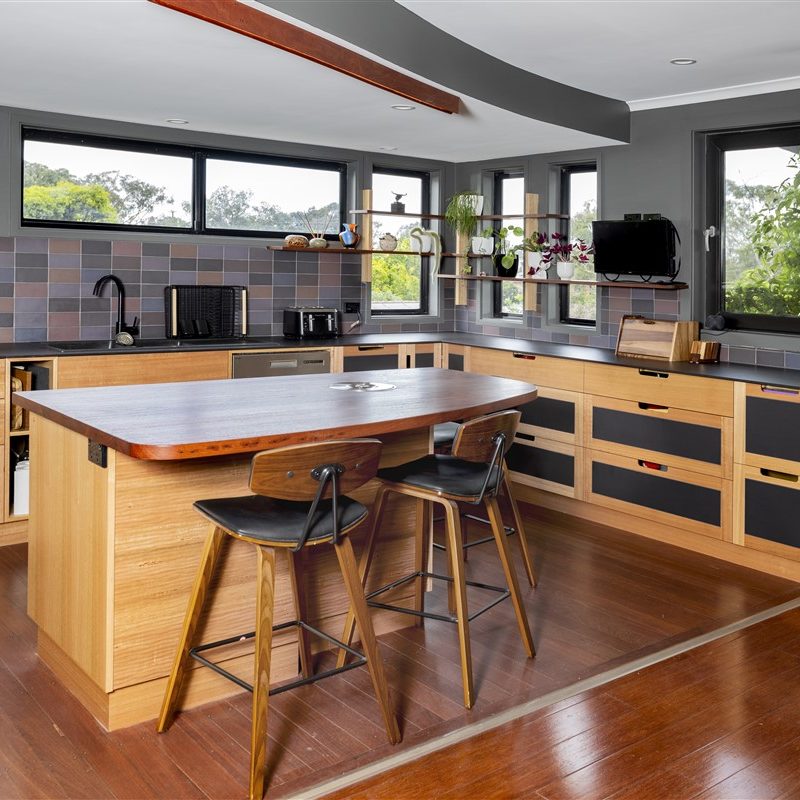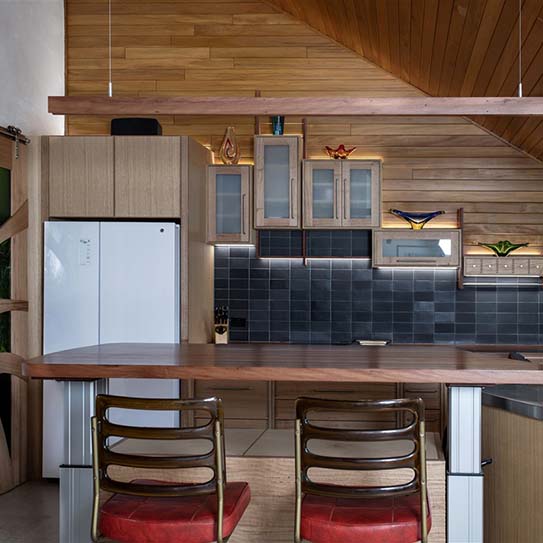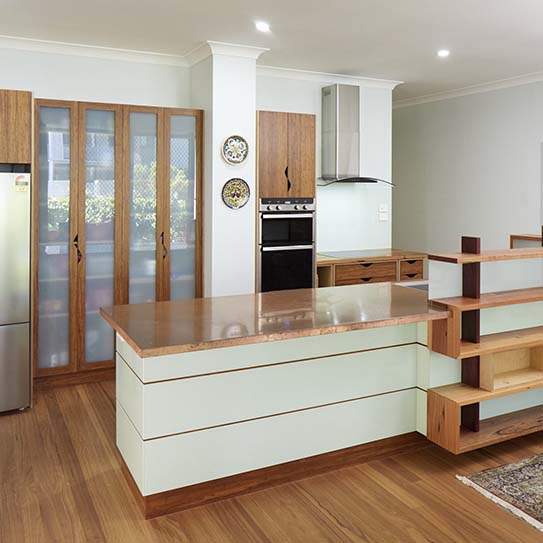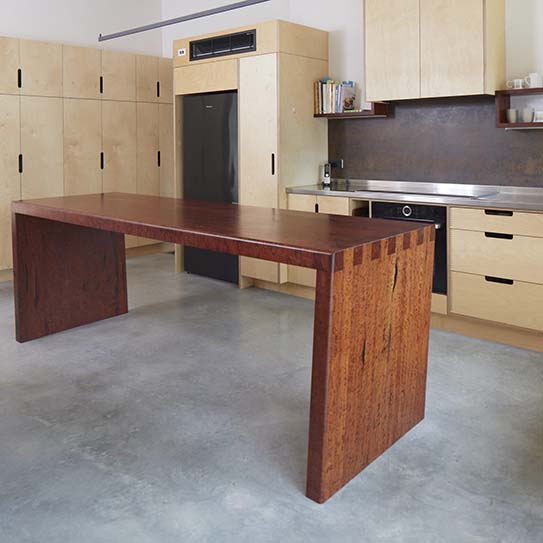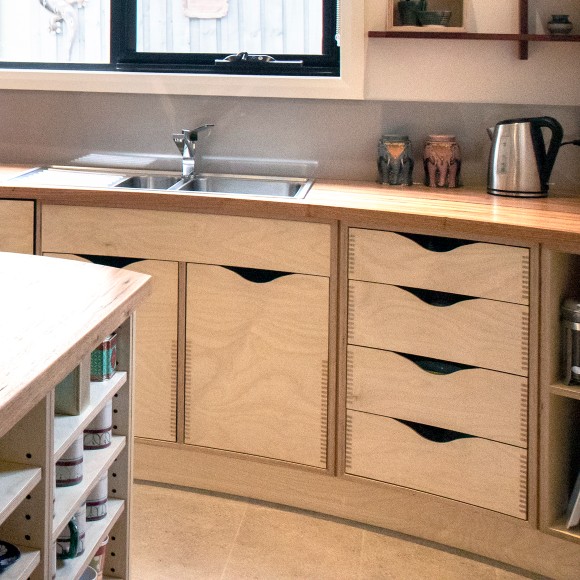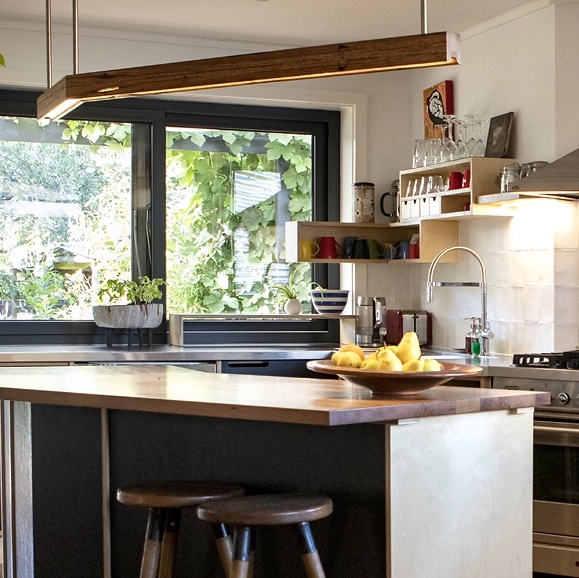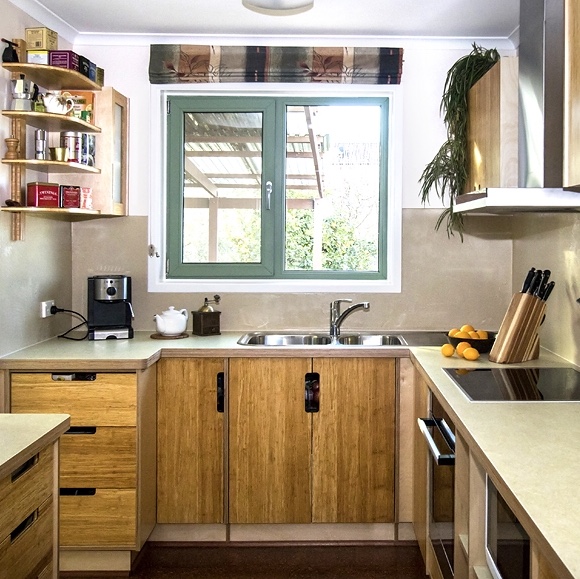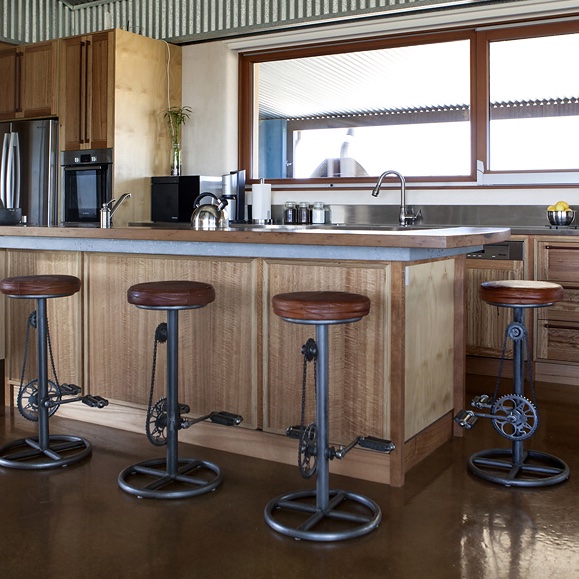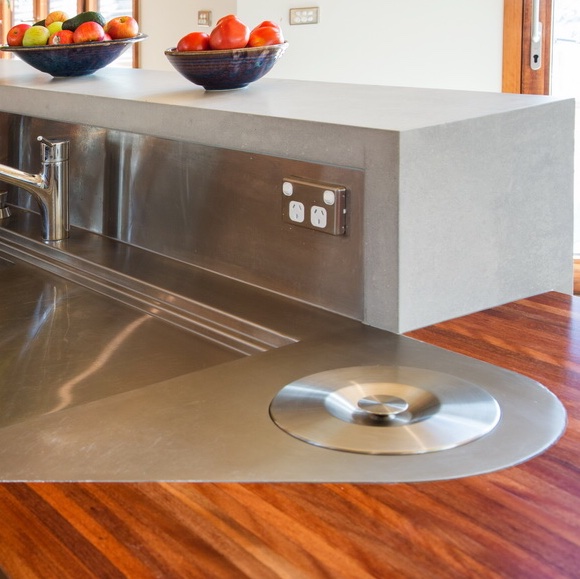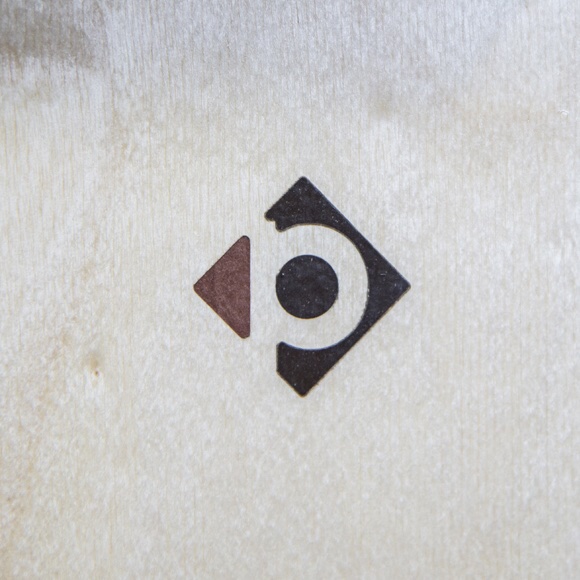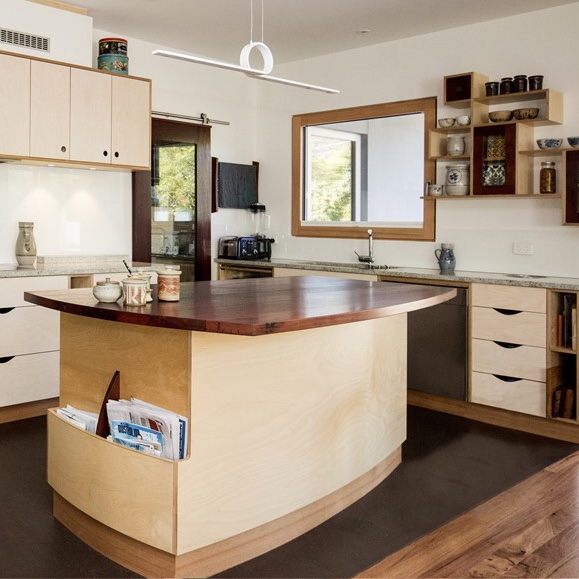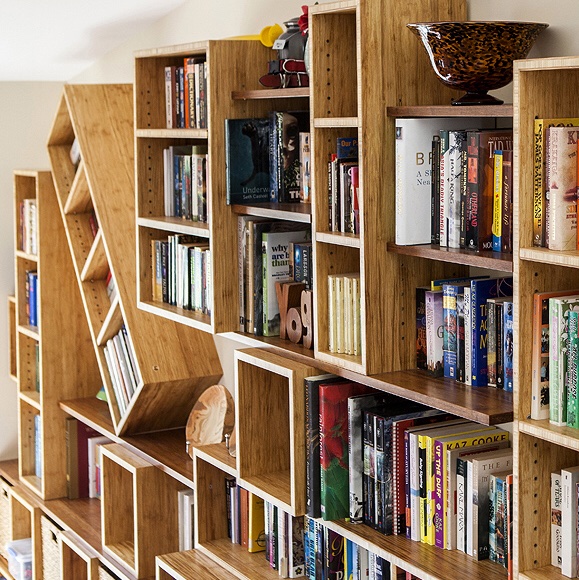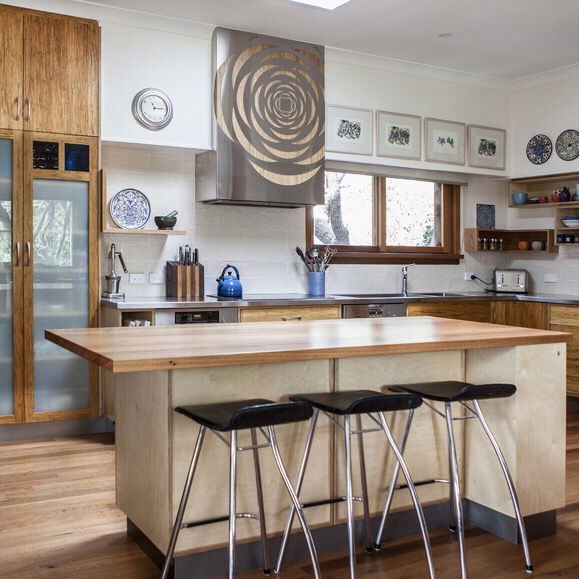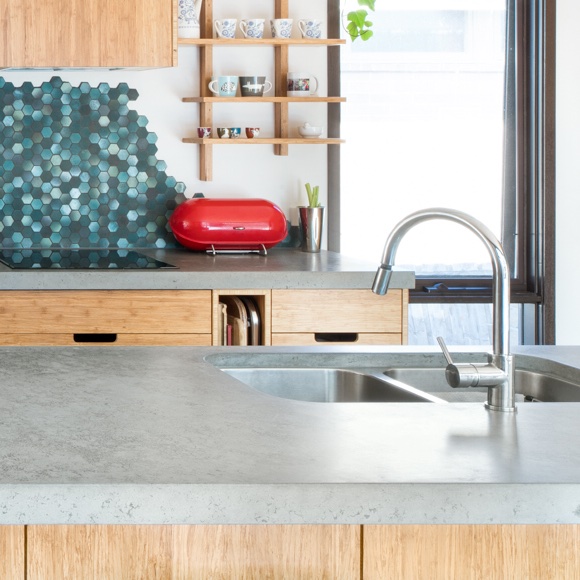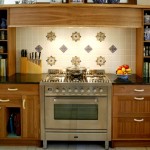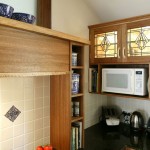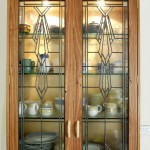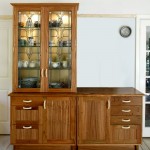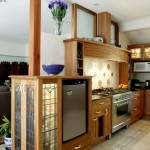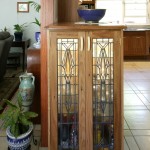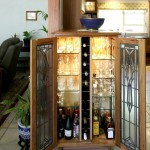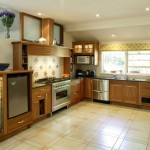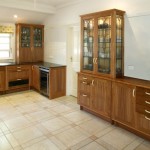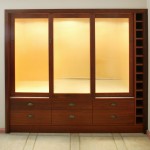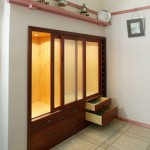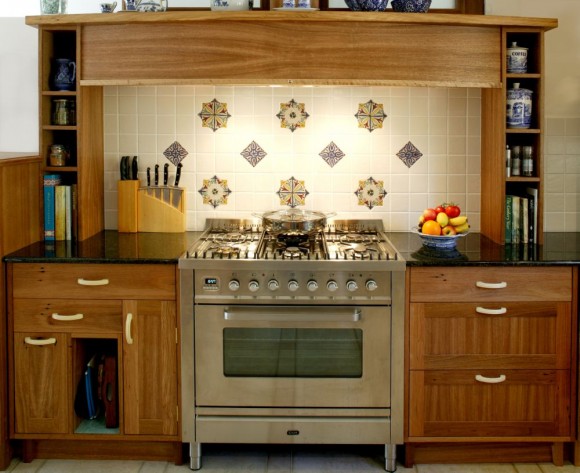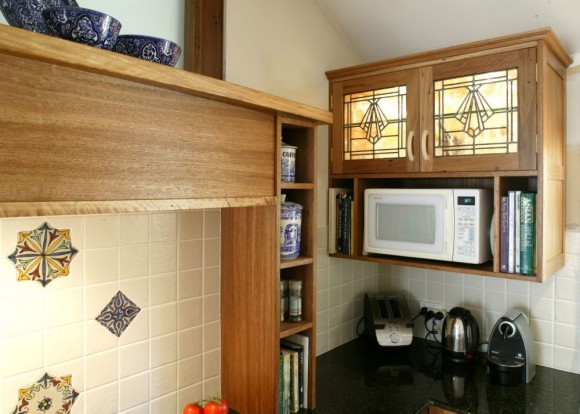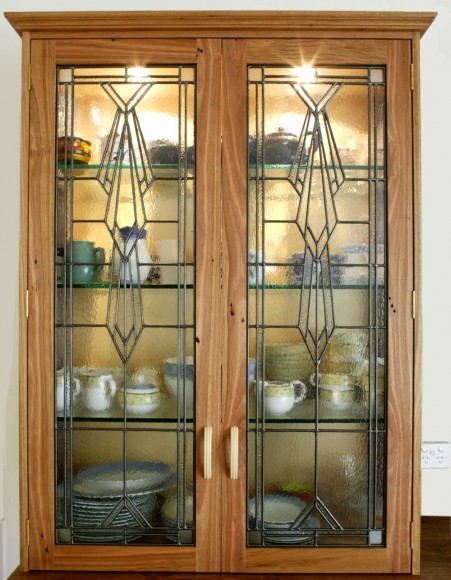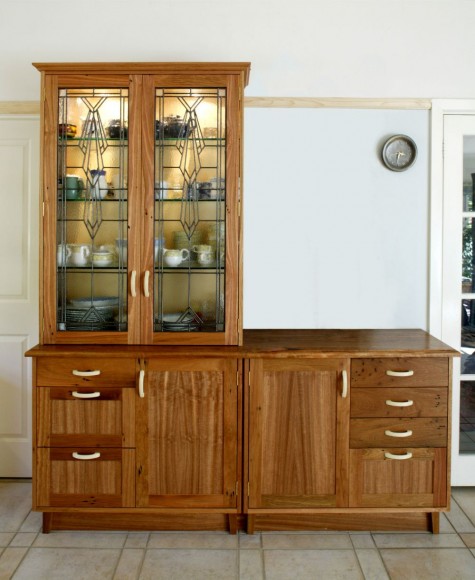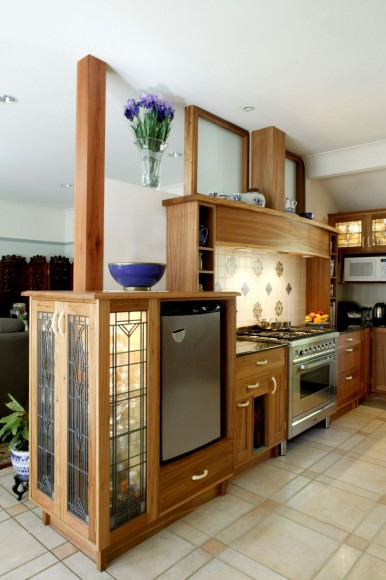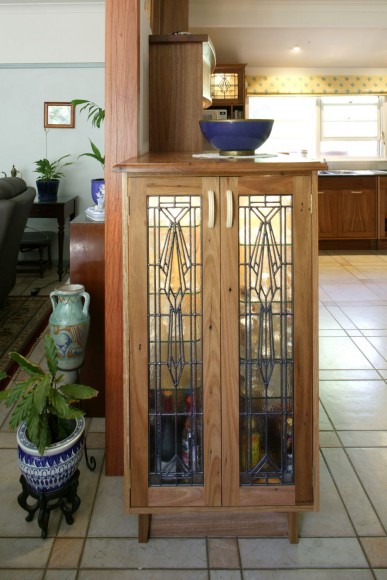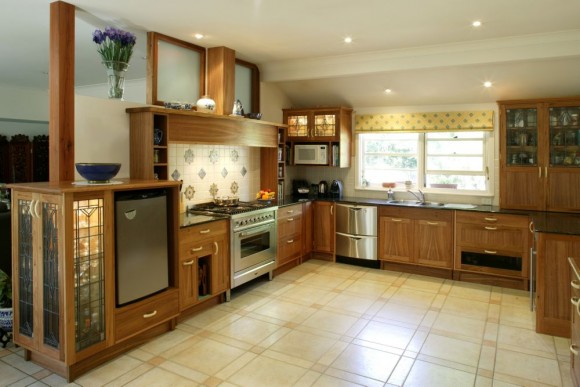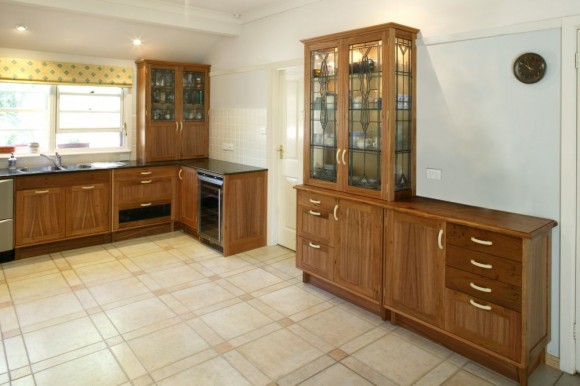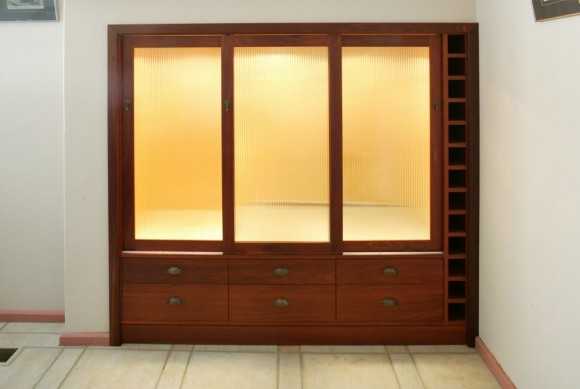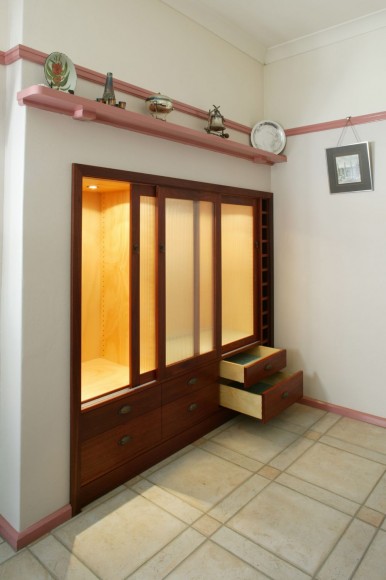Brief:
To build a traditional style kitchen that looked like free standing furniture from the 1930’s and 1940’s to fit in with their house in Griffith. The style pictures given to us included units that were painted and units that incorporated lead lighting in the doors. In addition to this, the clients were after a kitchen that would stand the test of time with regards to durability and longevity.The new kitchen was to be part of a small house renovation.
Result:
Plantation hoop pine plywood was used to build the cabinetry of the kitchen which gave a timber feel to the kitchen, helped to achieve the client’s desire for a durable and long lasting kitchen and thirdly, while traditional meat safes were built out of solid timbers – oak, Australian red cedar etc. the plywood kept the kitchen within the client’s budget.
While concealed hinges and hardware have become a convenient and easy way to hinge a kitchen, we felt they had no place in this particular kitchen. We used exposed brass butt hinges and in order to address the smallest details, we polished each hinge individually as well as spun each brass screw.
To create the illusion of having separate furniture we used spacers between each unit. This also allowed us to have individual hinging styles that gave minor adjustment to the doors, while allowing us to build the units as integrated units.
The plinths were constructed to create an illusion of individual under frames to each unit.
The curved bulkhead above the cooking area was constructed to give the appearance of an alcove with a chimney and the rangehood was housed in this bulkhead and the fans were installed in the roof space.
A separate dining room unit was built in the same style of the kitchen to complement the kitchen.
Materials:
- Plantation hoop pine plywood
- 8mm solid recycled hardwood edges
- Solid recycled blackbutt door frames with matching veneered plywood panels
- Granite benchtop
- Marmoleum
Design, manufacture and instalation: Select Custom Joinery
Leadlighting: A Drop of Glass
Photography: John Tucker Photography
- All
- Kitchens
- Bathroom&Laundry
- Bookshelves&Home Office
- Doors
- Commercial
- Furniture
- Entertainment Units
- Happy Snaps




